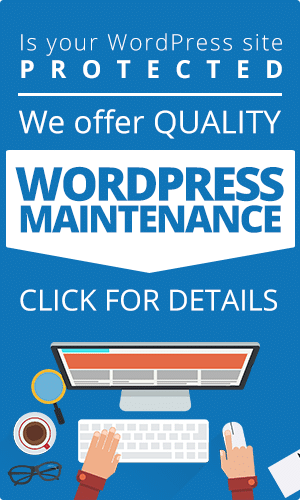The average internet user’s attention span is a scarce and valuable resource. And whether you know it or not, your content is at war over it.
Every blog topic you conceptualize, every paragraph you format, every sentence you write is ammunition in this ongoing battle for space in your reader’s mind.
It’s critical to understand that your blog is fighting against an invisible enemy. You’re not always up against a direct competitor, which would be another website clamoring for attention next to yours. No, you’re fighting against something even more powerful: the promise of more accessible material that’s never more than two or three clicks away.
Internet users have become so used to simply clicking on that “back” button or closing a browser tab if what they’re reading doesn’t offer immediate engagement. Or if the content they’re looking at doesn’t compel them to stay tuned.
In this article, I’m going to discuss readability – one of the most important weapons a blog publisher has in the battle for the eyes and brains of their audience.
What Is Readability?
Bluntly put, a post’s readability indicates how well it retains the reader’s attention or how easy it is for your readers to find the information they’re looking for.
The higher your post’s readability, the more likely your visitor is to finish what they started reading or that they’ll be satisfied with the section they did read.
What Makes a Blog Post Readable?
For the purposes of this post, I’m going to disregard quality of writing as a factor in readability. Not because it’s not important; as you can imagine, it’s immensely important.
I’d rather assume that you have the skills necessary to formulate accessible, engaging words, sentences, and paragraphs.
I’m going to assume that whoever writes your content can communicate clearly and effectively. That they can build a logical, pleasing sequence of connected ideas. And that they can express these ideas using language that keeps the reader captivated.
When discussing readability, I’m going to look at how things like content structure, user interface, formatting, and other technical aspects of your blog and its content engage the reader.
Let’s get started!
Tips on Maximizing Your Blog’s Readability
Use Headings Frequently and Logically
No matter how many hours you’ve poured into your latest blog post, no matter the care with which you’ve constructed every sentence, most of your readers are going to skim over it.
People who skim your post are often looking for a particular piece of information, possibly the keyword that brought them there. And who can blame them? They have busy lives that they need to get back to!
By grouping sections of your content under visible, descriptive headings, you’re making this job a lot easier for them. Don’t be afraid to use multiple levels of headings, either. If one section starts feeling bloated, get it under a sub-heading of its own.
Sure, it may feel like you’re enabling bad reading behavior and encouraging readers not to engage fully with your beloved text. But remember that keeping a visitor happy is more important than your ego.
So what if they didn’t read every single word of the post? They found what they were looking for and had a pleasant experience doing so.
Avoid Walls of Text
“Wall of text” is such a perfect term. I love that it’s become part of the UX lexicon.
When confronted by a tall, wide, unbroken section of text that runs from the top of the screen to the bottom, readers feel obstructed. The act of reading becomes unpleasant, and skimming becomes virtually impossible.
In UX terms, the act of breaking a wall of text into friendlier, more accessible sections of information is called “chunking.”
Chunking can be done using any number of techniques that I’ll get to later, but what’s critical to know is that it increases your content’s readability significantly.
Two other excellent reasons for chunking is that it’s known to improve how readers understand and remember what they’re reading.
So, yes… significantly improved readability, better comprehension, more memorable. I don’t think I can make a stronger case for breaking those walls into chunks.
Let’s take a look at the methods that good web designers and writers use to do this:
- Use a narrow column of main body text. Some experts have published guidelines as to how wide the text column should be, but I’m hesitant to follow these to the letter. This largely depends on your site’s layout, typography, and the UI elements visible on the screen.
- Use visual elements. This doesn’t just have to be photographs or illustrations. Graphs or other data visualizations work wonderfully and are a great alternative to simply typing out relevant stats. Here is an example of a blog post that makes great use of infographics.
- Use bulleted lists for a selection of related points. Not only is this a great method for chunking, but they also make skimming much easier.
- Use block quotes when citing an extract from an external resource. Using a blockquote may need a little bit of HTML and CSS knowledge, but most content management systems should make it quite easy to implement.
- Use pull quotes to highlight an extract of your own content. This is great for chunking, and it also helps draw the reader’s attention to a specific idea or thought that you want to highlight.
- Use headings and subheadings to separate independent content sections from each other.
- Shorten your paragraphs to no more than two or three sentences. You can even limit a paragraph to a single sentence if it’s particularly unique or powerful.
These are just some approaches you can take to avoid shoving a wall in front of your audience’s eyes. There are dozens more being used very smartly all over the web. Stay aware of this concept and see what other smart site designers and writers are doing.
Think About Fonts and Typography
In the digital age, it’s easy to take things like typefaces, alignment, line-height, and kerning for granted. We can change the entire typographic profile of our post with just three or four clicks – no sweat.
This often means that we make these decisions based on what “looks nice” or something even more abstract, like our mood. What we forget is that each one of these choices has a very material impact on our readers’ ability to engage with our blog posts.
Here are some basic guidelines about how to use fonts and typography to maximize readability:
- The Font you use in the body of your blog posts has a big impact on readability. Sans Serif fonts are the most commonly used because of their simplicity and the clean, modern tone they’re associated with. Helvetica, Roboto, and Open Sans are three of my personal favorites.
- Font size plays an equally important role. Most designers are leaning towards 16pt to 18pt as their default body size. Some popular sites, like Medium, are even going upwards of 20pt.
- Line-height is the space between two lines of text, and it is measured as a percentage of the font size. Experts suggest that the ideal setting for web content lies between 130 and 150 percent.
- Kerning is the space between the letters of a word. Since different fonts have different widths, it’s not really possible to suggest a universal kerning value. It’s best to experiment with different settings and choose one where letters don’t overlap or touch each other.
Typography is an incredibly interesting design topic. Its evolution from the era when printing was first developed through to the information age is something I highly recommend all designers familiarize themselves with.
Use Images
As I mentioned in the section about walls of text, imagery is a vital part of readability. And not only because it helps with “chunking” your content into more accessible sections.
Scientific research has proven readers have a far better chance of understanding and remembering visual input over text. At the time, the concept was so remarkable that researchers even gave it a fancy name: the Pictorial Superiority Effect.
Visual information improves the readability, untangles complex information and shows you master your content. With Mind the Graph, you can easily choose from an enormous number of illustrations from various categories.
Some remarkable statistics emerged from research into this phenomenon.
- Subjects remembered around 10% of written and verbal content three days after exposure.
- When an image was added to the content, this figure went up to 65 percent!
- A year after exposure to the visual content, subjects could still recall details with over 60% accuracy.
The human brain clearly loves visual content. Why not pepper your blog post with as much of it as is appropriate?
So many bloggers make the mistake of thinking the quality of their writing will drive the value of the content. But what they’re forgetting is that, by and large, people aren’t reading online content for the sake of reading.
People aren’t reading company blogs because they want to be entertained by prose. They want a solution to a problem, and the writer’s job is to create content – any content – that nudges the lead towards conversion.
So don’t be afraid to use visuals liberally in your posts. Here are some guidelines on how to do this effectively.
- A featured image (also called a hero header) close to the post title is an absolute must-have.
- Use custom images to communicate complex concepts. Nothing communicates complicated processes or super-detailed statistics as well as a diagram or chart. These are easy to throw together using a free design tool like Canva.
- Invest in an infographic for as many posts as you can afford. Sure, they can be expensive to design professionally, but they are absolutely perfect for summarizing a post’s main points.
- Screenshots are fantastic for showing a reader how to do something on their laptop or phone. Why use a whole paragraph to describe where they should click and what to expect when it’s incredibly easy – and way more effective – to simply show them?
- Don’t hold back on imagery. You’re unlikely to completely overwhelm your readers with visuals. Neil Patel even suggests that bloggers use an image as often as every 150 words!
Get the Contrast Right
I’ll keep this quick and simple.
Contrast is actually an element of typography, and it refers to the legibility of text against its background.
It’s not 2001 anymore. We don’t publish white text on black backgrounds anymore. We don’t publish any color text against complex background images anymore.
Keep it simple. For your blog’s body content, use black text against a white or slightly off-white background. You can toy with cute color combinations when you design the graphics you use in your post. But whatever you do, don’t get creative with colors in the main body.
Some Closing Thoughts
This post is the tip of the iceberg when it comes to improving the readability of your blog posts. Especially if you start considering the quality of your writing, which is something I deliberately omitted from this post.
There are countless ways to toy with the structure and presentation of your blog content to gauge its readability.
This brings me to the final point I want to make. As you continue with the journey of improving your blog, it’s vital that you measure your results.
If you decide to make a design change on your website or that you want to start including more imagery in your posts, you need to be able to track the outcome of these changes. Make sure you have access to your user behavior analytics. There’s no need to delve much deeper than “bounce rate,” “average time on page,” and “average pages per session.”
When it comes to assessing a change in blogging strategy, seeing how these metrics change over time is crucial. Don’t make changes in the dark. Use Google Analytics and make sure your audience appreciates your new direction.
Need help? Check out our WordPress website design services, we’d be honored to partner with you!






